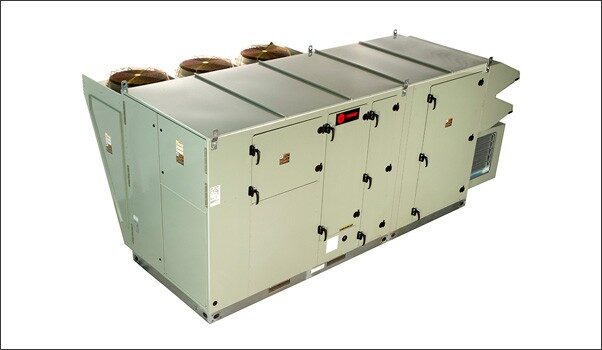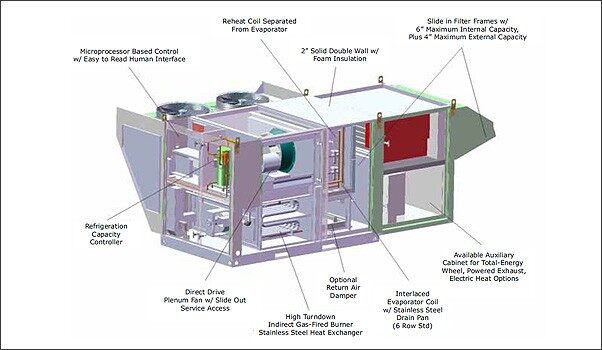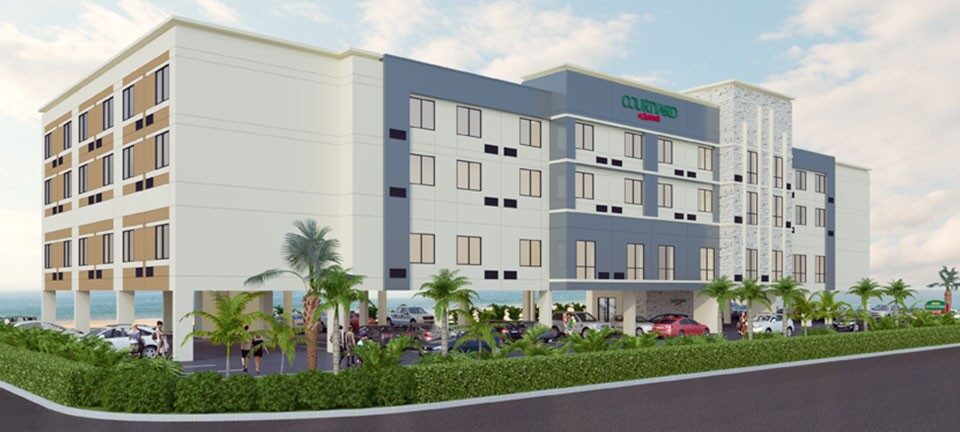DEDICATED OUTDOOR AIR SYSTEMS
Did you know that allowing your DOAS (dedicated outdoor air system) to deliver cooler air in the summer could actually save you money? A DOAS uses a separate unit to condition (heat, cool, humidify, dehumidify) all of the outdoor air brought into a building for ventilation and then delivers it to each occupied space. Meanwhile, a separate local HVAC unit (such as a fan coil, water-source heat pumps, or PTAC) in each space provides cooling or heating to maintain the desired space temperature.
Typically a DOAS is designed with hot gas reheat to deliver dehumidified outdoor air to the space at a neutral temperature. The DOAS cools the outdoor air to approximately 55°F to dehumidify the air first. It then reheats the air using heat recovered from the hot refrigerant gas to approximately 70°F before delivering air to the space. If the DOAS is designed with modulating control of the hot gas reheat, then the building owner can set the dry-bulb temperature delivered by the dedicated OA unit based on their preference. Since the outdoor air is cooled to 55°F for dehumidification already regardless of the unit set point, it can be delivered to the space at a lower temperature and the building owner can take advantage of this “free” cooling. This “free” cooling takes load off of the local HVAC units which would otherwise be providing this cooling. The Base4 design team has partnered with TRANE on several recent hotel projects, including the Courtyard Marriott shown above, to take advantage of this energy cost saving technique.
By treating the outdoor air separately from recirculated air, we can easily verify that sufficient ventilation airflow reaches each occupied space and help limit indoor humidity issues.
• Supplying drier air to the space increases guest comfort while reducing moisture related issues.
• Ensuring sufficient ventilation improves indoor air quality and also increases guest comfort.
There are several energy efficient options that can be implemented with a DOAS. Examples include Modulating Hot Gas Reheat, Energy Recovery Wheels, and Variable Speed Supply and Exhaust Fans. Depending on the application, these options can drastically reduce a building’s energy use. Applying a Dedicated Outdoor Air System effectively to any lodging facility can increase guest comfort, reduce energy use and increase the life of the building envelope.
If you’d like to discuss more about DOAS and how they might best be applied to your project, please contact us.
Thank you,
Blair D. Hildahl, PE, LEED AP
COO / Principal
blairh@base-4.com
TYPICAL TRANE DOA UNIT

DOA SCHEMATIC

TYPICAL HOT GAS REHEAT CYCLE





